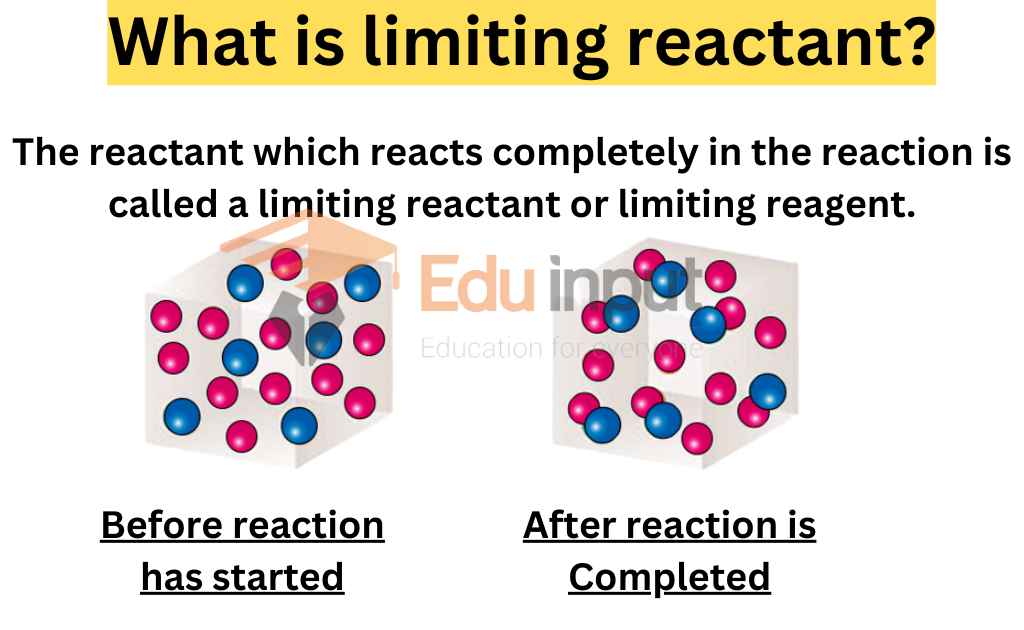What is Yield? Actual yield, Theoretical yield
The amount of products obtained as a result of a chemical reaction is called the yield of a chemical reaction.
Types of yield
Actual yield
The amount of products obtained in a chemical reaction is called the actual yield of that reaction.
Theoretical yield
The amount of products calculated from the balanced chemical equation is called theoretical yield.You can use this Theoretical Yield Calculator to accurately determine the expected amount of product in a chemical reaction.
Explanation
The theoretical yield is the maximum amount of the product that can be produced by a given amount of a reactant, according to the balanced chemical equation.
In most chemical reactions the amount of the product obtained is less than the theoretical yield. There are various reasons for that. A practically inexperienced worker has many shortcomings and cannot get the expected yield. A process like filtration, separation by distillation, separation by separating funnel, washing, drying, and crystallization if not properly carried out, decrease the actual yield.
Some of the reactants might take part in a competing side reaction and reduce the amount of the desired product. So in most of the reactions, the actual yield is less than the theoretical yield.
A chemist is usually interested in the efficiency of a reaction. The efficiency of a reaction is expressed by comparing the actual and theoretical yield in the form of a percentage yield.
Percentage yield = Actual yield / theoretical yield x 100
Percentage Yield Solved Problem
Solved Problem 1
During a chemical response 0.6 g of product is made. The most calculated yield is 1.4 g. What is the proportion yield of this response? Solution: Substitute the values within side the corresponding formula
Percentage yield = Actual yield/Theoretical yield × 100
Percentage yield = 0.6/1.4 × 100
Percentage yield = 42.9%
The percent yield of this response is 42.9%, Scientist attempts to select reactions with a excessive percent yield or excessive atom economy. This contributes to sustainable improvement with the aid of using decreasing waste.
Solved Problem 2:
When limestone is roasted, quicklime is produced (CaO) is produced according to the following equation. The actual yield of CaO is 2.5 kg, when 4.5 kg of limestone is roasted. What is the percentage yield of this reaction?
CaCO3 (s) → CaO (s) + CO2 (g)
Solution:
Mass of limestone is roasted = 4.5 kg = 4500 g
Mass of quicklime produced = 2.5 kg = 2500 g
Molar mass of CaCO3 = 100 g/mol
Molar mass of CaO = 56 g/mol
According to the balanced chemical equation
100 g of CaCO3 should give CaO =56 g
1 g of CaCO3 should give CaO = 56/100
4500 g of CaCO3 should give CaO = 56/100 x 4500
= 2520
Theoretical yield of CaO = 2520 g
Actual yield of CaO = 2500 g
% yield = Actual yield / Theoretical yield x 100
% yield = 2500/ 2520 x 100 = 99.2 %
Why actual yield is always less than theoretical yield?
Actual yield is always less than theoretical yield due to inexperienced workers, and loss of products during filtration, distillation, washing, and crystallization. Some time may be side reaction occurs.
What does yield mean in chemistry?
A measure of a chemical reaction’s efficiency, as a ratio of moles of product to moles of reactant. Usually expressed as a percentage.
% Yield = Moles of product.How is yield calculated in chemistry?
To express the efficiency of a reaction, you can calculate the percent yield using this formula:
%yield = (actual yield/theoretical yield) x 100
A percent yield of 90% means the reaction was 90% efficient, and 10% of the materials were wasted.What affects yield in chemistry?
The yield and rate of a chemical reaction depend on conditions such as temperature and pressure. In industry, chemical engineers design processes that maximize the yield and the rate at which the product is produced. They also aim to reduce waste and energy costs at all stages of the process.
Why is yield important in chemistry?
The percentage yield of a chemical reaction is an important consideration in industrial chemistry. It can be calculated to compare the yield (quantity) of the product actually obtained with what could have been obtained in theory, if all of the reactants were converted with no loss or waste.






Leave a Reply